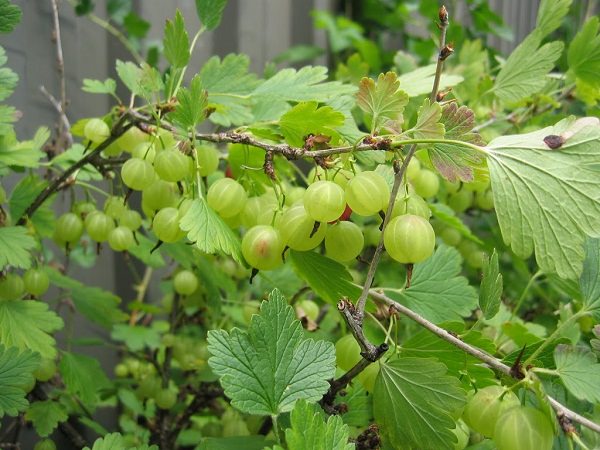Want to grow berries? But what to do if you don’t have space to plant them? Growing berries in containers is the answer!
Berries are great fruits to grow in pots because of their manageable size, depending on their type, you can grow most of them in containers.
1. Strawberries
USDA ZONES– 3-11
Growing strawberries in containers is quite easy. One of the best berries to grow in containers: Strawberries are perfect for planting on a small balcony or patio. Check out this informative article to find out the right time for planting strawberries!
Strawberries can be planted in hanging baskets, strawberry planters, and terracotta pots with 20-30 cm spacing in between the plants.
2. Acai Berries (Weight Loss Berries)
USDA ZONES– 9-11
Due to their significant health benefits and the fact that they are very rare, Acai berries can be quite expensive. Luckily, you can try to grow these berries in containers.
Only a dwarf Acai berry palm can be tried, which on the ground can grow up to 20-30 feet tall, but in containers, the height will be reduced to 10-12 feet.
It takes at least 3 years to become mature and start fruiting. It can be demanding regarding space and time, and you’ll need to repot it in a large container.
Growing Acai palm is suitable in warm subtropical or tropical climates. Colder regions may not be ideal for Acai berries, but you can always use a greenhouse to grow them or move indoors.
3. Raspberries
USDA ZONES– 2-8, cultivars like Mysore raspberry can be grown in warm regions above Zone 8.
If you are interested in growing raspberries in a container, then you should start by preparing a well-drained pot filled with rich soil. Ensure that the plants have access to a lot of sunlight. Any five-gallon container (12 inches and wide similarly) would be fine for shorter varieties.
Remember to water the plants regularly to keep the soil slightly moist always while feeding with a high potash fertilizer during growth for sweeter berries.
4. Blackberries
USDA ZONES– 3-10
Growing blackberries in a container can be fun and, at the same time, rewarding. All you need is a pot (5 gallons or more initially), a blackberry plant, soil, stakes for support, and a few pieces of the broken pot (to boost drainage, but it is optional).
Start by placing the broken pieces at the bottom of the container and filling it with nutrient-rich soil. Plant your blackberry into the pot and water it.
The support stakes come into play after the plant starts growing. This is because these berries are known to produce long and feeble canes that need help staying upright, especially during flowering and fruit development.
5. Blueberries
USDA ZONES– 3-10
If you are looking for the best berries to grow in containers, blueberries should be on your priority list. Despite the fact that they can take up some space, these berries are known to last longer than most garden berries. Also, with the right information and know-how, you can be able to grow them in small spaces.
The key benefit of growing blueberries in containers is that it makes it easy for you to keep the soil’s pH levels at lower amounts (acidic, between 4 to 5.5). Like most berries, good drainage and plenty of sunlight are essential to the plant’s proper and “fruitful” growth.
6. Mulberries
USDA ZONES– 5-11
Growing mulberries in containers can be a boon as their fruits are hardly available on the market due to their short shelf life. Fortunately, you can learn to grow it in a pot after some experiments.
Full sunlight, moderate watering, and the right soil is the key to its growth. Must check out our article on how to grow a mulberry tree in a container to learn everything in detail.
7. Black Currants

USDA ZONES– 3-9
Blackcurrants are also among the best berries to grow in pots. Their sweet flavor and richness in Vitamin C make them quite invaluable. For this, you’ll need a large container.
Like mulberries, it can do well in a wide variety of soils—but preferably good drainage with some moisture-retaining ability and rich in organic matter. Remember to place the container in a spot with plenty of sunlight.
You should also note that frost drastically reduces the plant’s yields. Therefore, make sure you set a few protective measures in case you’re not in a frost-free region.
8. Gooseberries
USDA ZONES– 3-8
Growing Gooseberries in containers is similar to currants; you’ll need a medium-sized pot, at least 15 inches deep but a little wider, as gooseberry bushes are shallow-rooted and tend to sprawl than growing upright. The best part is these never grow above 5 feet tall, which is good for container gardeners.










Howand where can we get the plant or seads of this baries
When choosing a pot, always opt for the largest container possible. Plan on needing a minimum soil volume of five to eight gallons per blueberry bush. For cane berries, eight or more gallons will support a nice colony of plants. And for strawberries, wide-rimmed containers allow for more plants per pot. Plan on three plants for every twelve inches of surface area.
How and from where can we get the plant or seads of these baries.??
Please suggest
Super